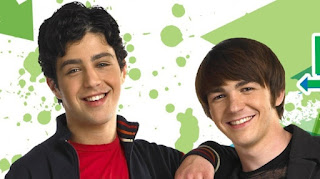blog post #5 That 70's show
 One of my
second favorite shows of all time would have to be That 70’s Show. The show
revolves around a teenager named Eric Forman who is your average high school
kid growing up in the state of Wisconsin in the era of the 1970s. Eric is
surrounded by his five other friends Donna, Fez, Kelso, Jackie, and Hyde. These
friends experience some of the ups and downs that many teenagers face while
growing up.
One of my
second favorite shows of all time would have to be That 70’s Show. The show
revolves around a teenager named Eric Forman who is your average high school
kid growing up in the state of Wisconsin in the era of the 1970s. Eric is
surrounded by his five other friends Donna, Fez, Kelso, Jackie, and Hyde. These
friends experience some of the ups and downs that many teenagers face while
growing up.
The idea of
gender ideology refers to the different types of standards or roles that we
associate with either men or women. The movie The Mask You live In talks about how society has these set
standards that boys have live by to become men and certain standards that girls
need to live by to become women. The film breaks down that these standards are
incorrect because nothing can really prove what is truly feminine and what is
truly masculine. As discussed in class, there are several different types of
gender dynamics and gender/sexuality tropes that we typically see in today’s
shows and movies. There are several tropes and dynamics that are obvious in
That 70’s Show.

 One of the
first gender dynamics that is seen in the show is that men are childish. Having a group of six friends can be tough at
times, especially when four of the six friends are boys. Throughout the show,
we see the boys always getting themselves into trouble because of their
childish acts. Whether its getting caught smoking weed or wrestling until one
of them gets hurt, boys will be boys. Their immaturity usually gets called out
by the girls, or Eric’s dad who’s famous saying is that he put his foot up
their ass for acting up.
One of the
first gender dynamics that is seen in the show is that men are childish. Having a group of six friends can be tough at
times, especially when four of the six friends are boys. Throughout the show,
we see the boys always getting themselves into trouble because of their
childish acts. Whether its getting caught smoking weed or wrestling until one
of them gets hurt, boys will be boys. Their immaturity usually gets called out
by the girls, or Eric’s dad who’s famous saying is that he put his foot up
their ass for acting up.
The second
gender dynamic seen in the show would have to be Donna Pinciotti resembling a Tomboy. Donna is seen as one of the
more dominant ones out of the friend group who is often seen as a manly girl,
even though she does end up getting in a relationship with Eric Foreman. Donna
is also seen as one of the more active ones of the friend group. No one in the
show even dares to pick a fight with Donna because they know it will not end
well for them.
 The last
dynamic then correlates to the first gender trope which includes a Masculine Girl, and a Feminine Boy. The
most ideal couple that would fit this category would be Eric Foreman and Donna
Pinciotti. As seen in the show, we can obviously see who runs the relationship
which is Donna. As I said before, Donna definitely resembles some masculine
traits, while Eric Foreman is usually the more passive one. The relationship is
weird because if the couple were to get in a fight, Donna would have to be the
one to stand up for Eric.
The last
dynamic then correlates to the first gender trope which includes a Masculine Girl, and a Feminine Boy. The
most ideal couple that would fit this category would be Eric Foreman and Donna
Pinciotti. As seen in the show, we can obviously see who runs the relationship
which is Donna. As I said before, Donna definitely resembles some masculine
traits, while Eric Foreman is usually the more passive one. The relationship is
weird because if the couple were to get in a fight, Donna would have to be the
one to stand up for Eric.
The second
gender seen in the show would be the obvious white male lead who is Eric Foreman. Eric is your average Caucasian,
heterosexual male who is born and raised in the United States. Eric comes from
a military household, being that his dad was a Veteran.
The last
gender and sexuality that is seen in the show is the idea of two girls to a team. The six friends consisting
of four guys and two girls although does have an uneven gender ratio, it still
highly favors men in the show so you basically can consider the ratio somewhat
even. I believe the two to four ratio gives different perspectives of both boys
and girls, but also odd because most of the friends end up dating one another.



Comments
Post a Comment